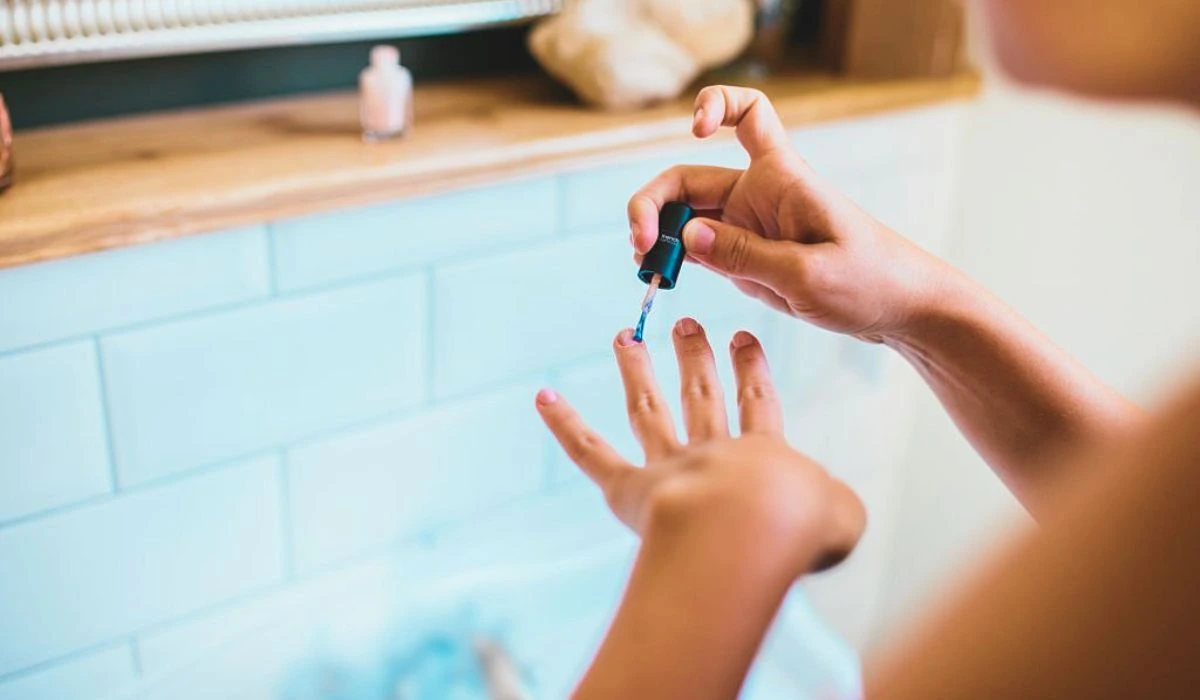Applying nail polish has become a popular beauty trend. Yet, worries about its potential link to cancer have arisen. This article will discuss the risk of cancer increasing through nail polish use.
Nail polish consists of various chemicals, such as formaldehyde, toluene, and dibutyl phthalate (DBP). These chemicals can be irritating. According to some studies, long-term exposure to them may raise the chance of certain cancers.
The Link Between Nail Polish And Cancer
There has been growing concern about the potential link between nail polish and cancer. Studies have suggested that certain chemicals found in nail polish, such as formaldehyde, toluene, and dibutyl phthalate (DBP), may have carcinogenic properties.

These chemicals have been shown to disrupt hormone function, damage DNA, and potentially lead to the development of cancerous cells. While more research is needed to fully understand the extent of the risk, it is important to be aware of the potential hazards associated with prolonged and repeated exposure to these chemicals.
Debunking Misconceptions And Addressing Concerns
Nail polish has long been a topic of concern when it comes to its potential impact on our health, particularly in relation to cancer. However, it is important to address these concerns and separate the facts from the misconceptions.
First and foremost, let’s clarify that there is no direct evidence linking nail polish to an increased risk of cancer. The ingredients used in nail polish, such as formaldehyde, toluene, and dibutyl phthalate, have raised some concerns, but their potential risks have been largely overstated. Regulatory bodies, like the Food and Drug Administration (FDA), have set limits on the concentrations of these substances in nail polish to ensure their safety for consumer use.
Moreover, the levels of exposure to nail polish chemicals during regular use are extremely low. Even salon workers who are exposed to nail polish on a daily basis have been found to have minimal risks when appropriate precautions and ventilation measures are in place.
Regulatory Measures On Nail Polish Safety
Regulatory measures ensure the safety of nail polish. Stringent guidelines are in place to monitor the composition and labeling. Formaldehyde, toluene, and DBP must be avoided due to their potential hazards. Manufacturers must comply to guarantee consumer protection.
For better safety, ingredient disclosure should be transparent. Labeling should include a comprehensive list of ingredients. This helps consumers with allergies or sensitivities make informed decisions.
To reduce exposure risks, salon professionals should be educated. They need to learn proper ventilation techniques and safe product application. Regular training programs should be conducted to maintain industry standards.
Collaboration between regulatory bodies and manufacturers is important. Sharing information and insights can help develop safer alternatives, reducing health risks from certain chemicals.
Tips For Safe Nail Polish Application
Tips for a Safe Nail Polish Application
To ensure a safe application of nail polish, follow these simple guidelines:
✅ Use a well-ventilated area: Applying nail polish in a well-ventilated space helps to minimize exposure to potentially harmful chemicals present in the polish and its fumes.
✅ Keep nails clean and dry: Before applying nail polish, make sure your nails are clean and free from any oils or lotions. Dry them thoroughly to help the polish adhere better and last longer.
✅ Avoid excessive application: Layering multiple coats of nail polish may increase exposure to chemical ingredients. Instead, apply a thin, even layer, allowing it to dry completely before adding additional coats.
✅ Choose safe and non-toxic nail polish: Look for nail polish brands that are free from harmful chemicals such as formaldehyde, toluene, and dibutyl phthalate (DBP). Opt for non-toxic and water-based formulas for a safer application.
✅ Use a base and top coat: Applying a base coat before the actual nail polish helps protect your nails from staining and provides a smoother surface for the polish. A top coat can extend the life of your manicure and add an extra layer of protection.
Choosing Safer Nail Polish Brands
For healthy nails, it’s key to pick a nail polish brand that prioritizes safety. Here are some tips:
- Check if the polish has no formaldehyde, toluene, or dibutyl phthalate (DBP).
- Look for polishes labeled as “3-free” or “5-free”.
- If it matters to you, go for cruelty-free and vegan formulas.
- Water-based polishes are often better for your nails and the world.
- Read reviews and forums to learn about specific brands and safety.
- Try samples or tester bottles before buying to make sure it works for you.
Be mindful that natural or organic labels don’t always mean safe. Read the ingredient list closely!

